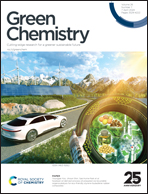Used tissue paper as a 3D substrate for non-enzyme glucose sensors†
Abstract
Non-enzymatic electrochemical blood glucose sensors often suffer from issues such as requiring an alkaline environment, limited monitoring range, and poor anti-interference properties. Carbon substrates have been demonstrated to improve the performance of non-enzymatic sensors, but complex and energy-consuming manufacturing processes restrict their use. Herein, a simple and green approach for the preparation of 3D porous Au/Au–Pt networks (PAAPNs) is proposed using tissue paper for recycling as the nanomaterial substrate to deposit Au–Pt bimetallic nanoparticles. The unique structure of the PAAPNs sensor allows for low-potential operation (−1.0 V) with a wide monitoring range (−0.25 to 36 mM) in a neutral environment. Moreover, the sensor exhibited excellent selectivity (<10% response of interference) even without the use of an anti-interference outer membrane. Further investigation using density functional theory (DFT) simulation revealed the synergistic effect between Au and Pt in promoting glucose oxidation. Overall, this work provides a simple and low-carbon footprint method for creating carbon substrates from tissue paper for recycling, offering new opportunities for fabricating novel value-added nanomaterials for medical sensing applications.



 Please wait while we load your content...
Please wait while we load your content...